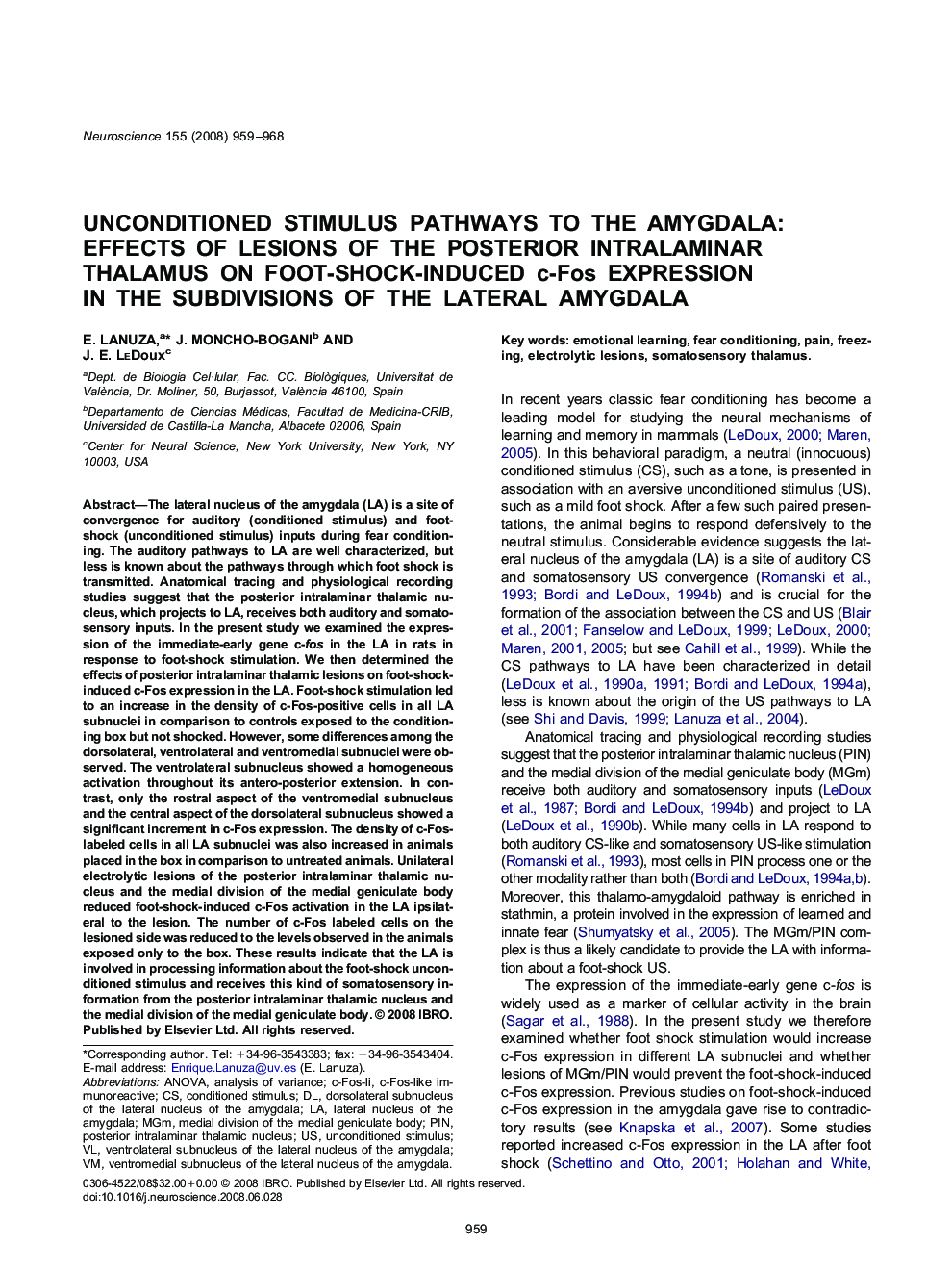| Article ID | Journal | Published Year | Pages | File Type |
|---|---|---|---|---|
| 4340745 | Neuroscience | 2008 | 10 Pages |
The lateral nucleus of the amygdala (LA) is a site of convergence for auditory (conditioned stimulus) and foot-shock (unconditioned stimulus) inputs during fear conditioning. The auditory pathways to LA are well characterized, but less is known about the pathways through which foot shock is transmitted. Anatomical tracing and physiological recording studies suggest that the posterior intralaminar thalamic nucleus, which projects to LA, receives both auditory and somatosensory inputs. In the present study we examined the expression of the immediate-early gene c-fos in the LA in rats in response to foot-shock stimulation. We then determined the effects of posterior intralaminar thalamic lesions on foot-shock-induced c-Fos expression in the LA. Foot-shock stimulation led to an increase in the density of c-Fos-positive cells in all LA subnuclei in comparison to controls exposed to the conditioning box but not shocked. However, some differences among the dorsolateral, ventrolateral and ventromedial subnuclei were observed. The ventrolateral subnucleus showed a homogeneous activation throughout its antero-posterior extension. In contrast, only the rostral aspect of the ventromedial subnucleus and the central aspect of the dorsolateral subnucleus showed a significant increment in c-Fos expression. The density of c-Fos-labeled cells in all LA subnuclei was also increased in animals placed in the box in comparison to untreated animals. Unilateral electrolytic lesions of the posterior intralaminar thalamic nucleus and the medial division of the medial geniculate body reduced foot-shock-induced c-Fos activation in the LA ipsilateral to the lesion. The number of c-Fos labeled cells on the lesioned side was reduced to the levels observed in the animals exposed only to the box. These results indicate that the LA is involved in processing information about the foot-shock unconditioned stimulus and receives this kind of somatosensory information from the posterior intralaminar thalamic nucleus and the medial division of the medial geniculate body.
